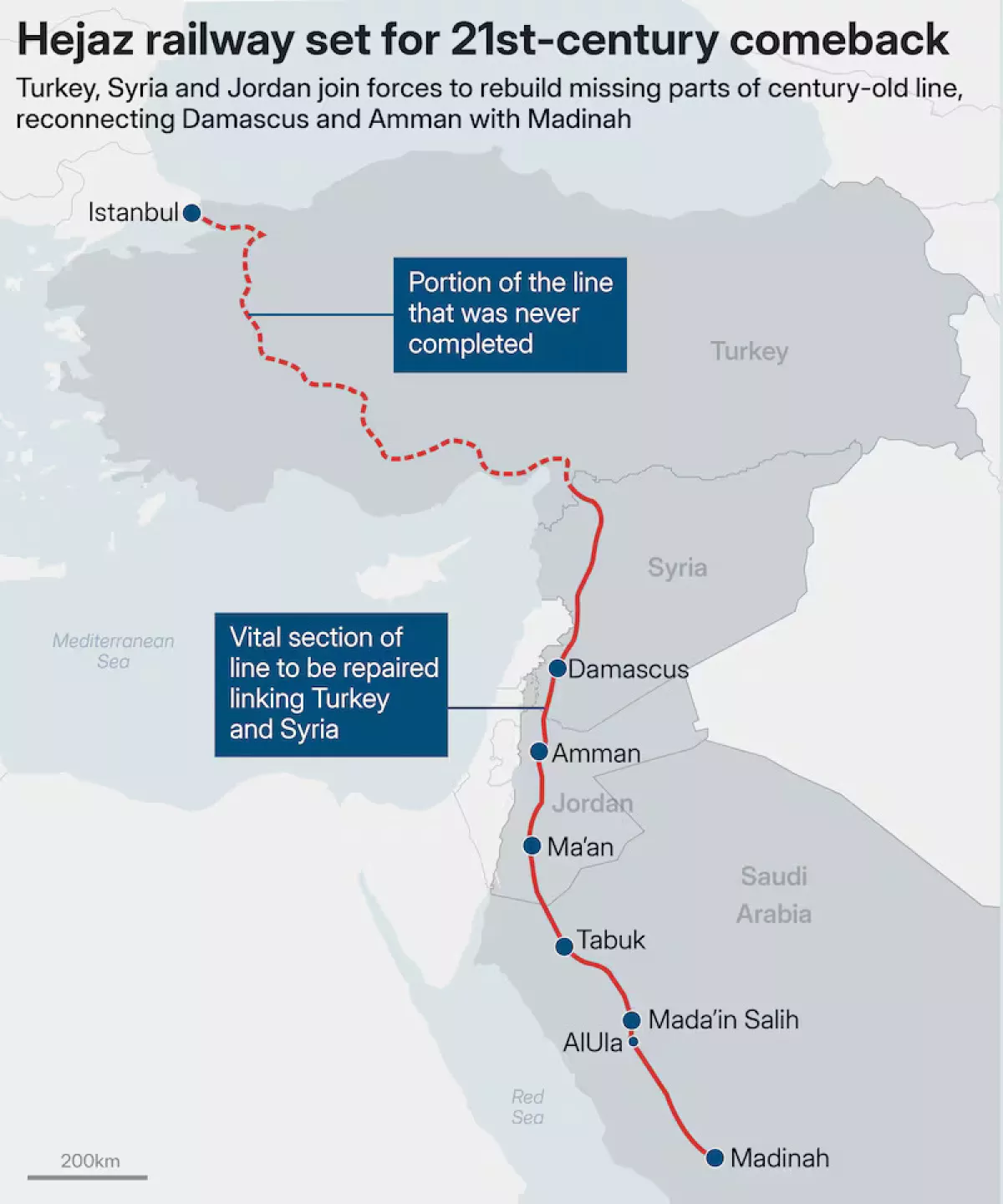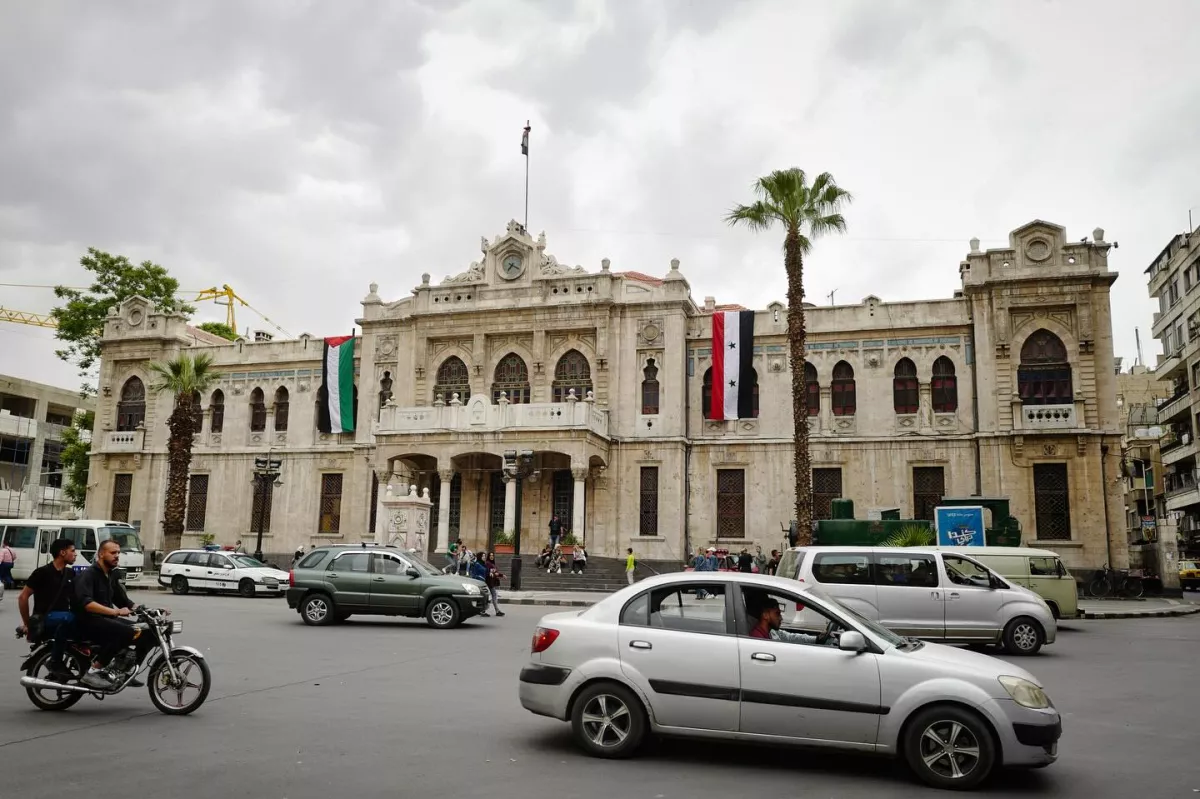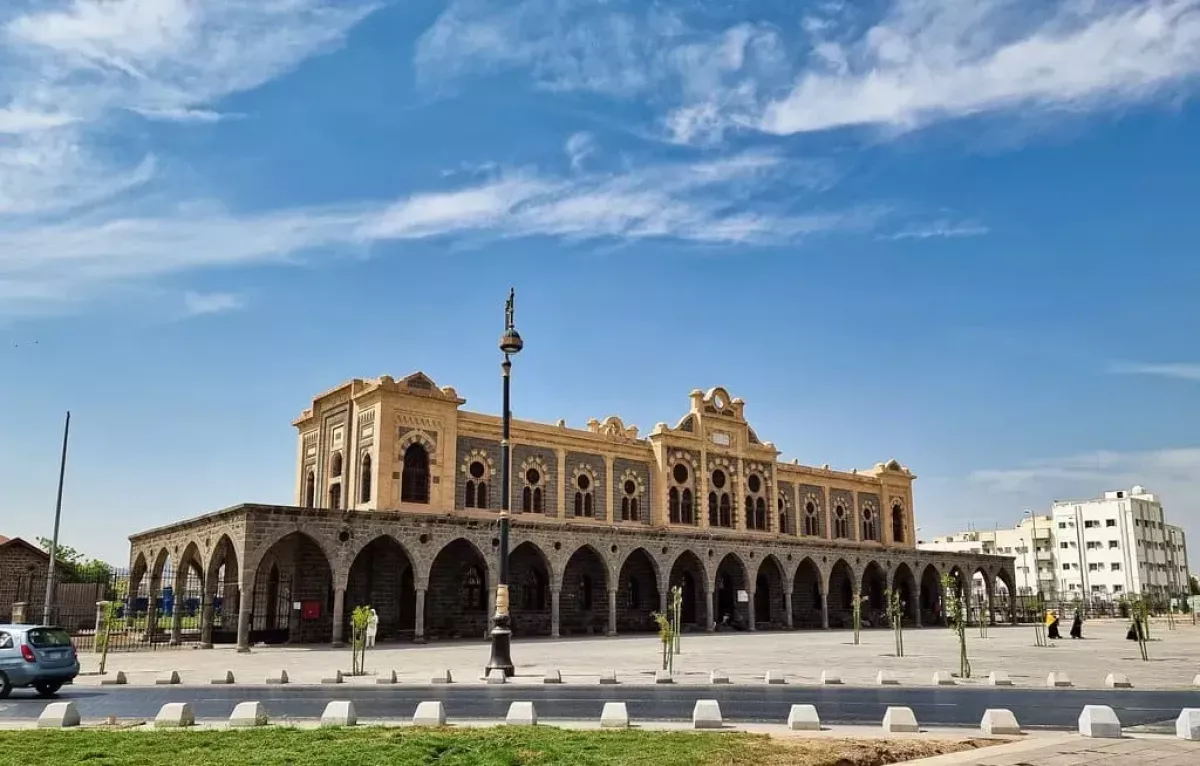Türkiye spearheads restoration of historic railway across Levant Revival of Hejaz together with Syria, Jordan
The Hejaz Railway, a historic line once connecting Damascus to Madinah, is set for revival under a draft memorandum of understanding signed by Türkiye, Syria, and Jordan earlier this month. The agreement, reached during a September 12 meeting in Amman, marks the first major step toward reestablishing transport collaboration between the three countries that have been disrupted by wars.
While the gathering was initially described as a push to enhance the overall regional transport cooperation, Turkish Transport and Infrastructure Minister Abdulkadir Uraloğlu revealed on September 23 that “the historic Hejaz Railway is being revived,” as reported by the Daily Sabah publication.
Under the plan, Türkiye will develop a master plan for the project and take on reconstruction of a 30-kilometer missing section inside Syria. Jordan, meanwhile, will study technical requirements for operating locomotives, while joint research will focus on improving Turkish access to the Red Sea through Jordan’s Port of Aqaba.
The Hejaz Railway, named after a region in the west of today’s Saudi Arabia was first commissioned in 1900 by Ottoman Sultan Abdulhamid II. Intended to connect Istanbul with Makkah and facilitate the Hajj pilgrimage, it also served military and administrative purposes, strengthening Ottoman influence across distant provinces.
Completed to Madinah by 1908, the railway cut the gruelling 40-day camel journey between Damascus and the holy city to just 72 hours. The line branched out from Deraa toward Palestine, which was under Ottoman rule at the time before eventually falling under British administration.
According to Noema magazine, the line stopped short of Makkah partially because Ottoman authorities had struck a deal with Bedouin tribes, who relied on escorting and protecting pilgrims for income. By halting construction before the holy city, the tribes could continue this traditional role.
Beyond its logistical and economic importance, the transport corridor carries deep cultural significance for the countries involved. One of the most notable aspects of the railway was how its construction was financed. While the Ottoman state contributed through revenues and taxes, the bulk of the funding came from Muslims across the world. Donations from the wider Muslim community almost entirely covered the costs of laying tracks and building stations.
The engineering work was carried out by German and Turkish specialists alongside local labourers recruited along the route, but foreign capital was deliberately excluded to ensure the project remained “sacred,” funded solely by Muslims. To this day, the railway is regarded as a waqf — a charitable endowment — and is seen as belonging to the entire Muslim world.
The railway’s operation was abruptly interrupted in 1917. During World War I and the Great Arab Revolt, Arab fighters and British forces led by intelligence officer T.E. Lawrence — widely known as Lawrence of Arabia — sabotaged the track in their campaign against the Ottomans. Following the empire’s collapse, the line ceased regular service.
Desire to revive railway never faded
There were multiple efforts to reopen the railway post-1917. According to reporting by the Gulf International Forum, repairs enabled trains to reach Medina again in 1919 and 1925. However, persistent technical issues led to the permanent closure of Medina station, though the train station in the holy city still stands, as it does in the Syrian capital of Damascus. Other sections across Syria, Jordan, Lebanon, and the Mediterranean coast continued sporadically, with Lebanon’s Mina Station operating until the outbreak of the Lebanese Civil War in 1975. Despite the war ending in 1989, no revival attempts have been made there.
In 1904, four years after the Damascus section began, 460 kilometers of new track extended the line into Jordan, later linking to the Mediterranean through Haifa, which is now part of Israel. Jordan today operates only fragments of the system: a weekly service from Amman to Al-Jizah and a tourist train across the Wadi Rum desert, following the route once attacked by Lawrence of Arabia.
The Haifa branch line, running to the Mediterranean, continued until 1948. Israel’s declaration of independence and the ensuing war with Arab states shut it down.
Israel has since reconstructed part of the route, reopening the Haifa-to-Beit She’an section in 2016. Israeli authorities have also sought to cooperate with Jordan and Saudi Arabia on reviving broader connections.
In Saudi Arabia, much of the railway infrastructure has disappeared into the desert, though remnants remain. The Tabuk station has been converted into a modest museum, while AlUla — a city central to the Kingdom’s cultural and economic development plans — has incorporated the old railway into its revitalization projects. In the holy city of Medina
Uncertainty remains about whether the current revival project will fully reestablish the Hejaz Railway as originally envisioned or extend it all the way to Istanbul.
For now, the deal promises renewed land transport routes between Türkiye, Syria, and Jordan after a 14-year break caused by the Syrian civil war, which ended in December 2024 with the ousting of Bashar Al Assad.
“While preserving our region’s historical heritage, we are also establishing strong co-operation in international transport corridors,” Minister Uraloğlu said. “We will continue to work towards a shared future in transportation.”

By Nazrin Sadigova










